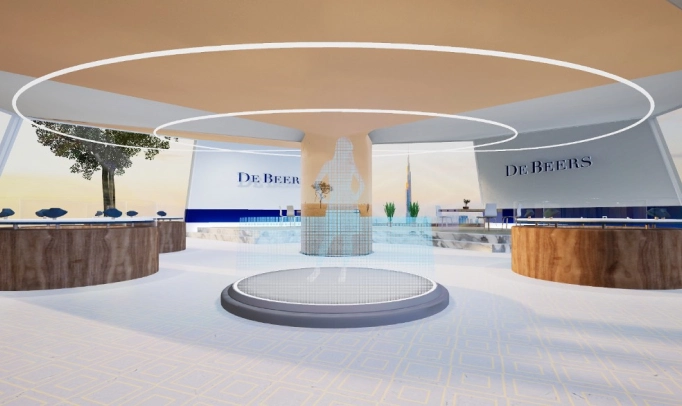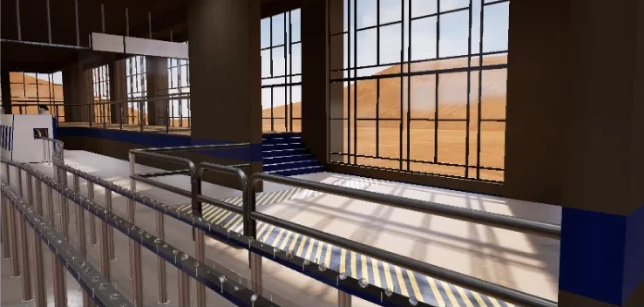Project Overview.
De Beers wanted to explore using VR as a tool for virtual collaboration and had an initial budget to prototype and build a cool De Beers virtual space. They wanted spaces that were easy to navigate, and interesting to inhabit without involving any complex interaction.



Creative Development.
Designing and producing content for Virtual Reality experiences requires a knowledge of real-time 3D processes so that we can be sure of a smooth delivery to the developers. At Pebble, we are lucky to have talented artists who are well versed in emerging technologies like Virtual and Augmented Reality. The environments were designed and modelled in such a way that we could reduce the complexity and improve performance.
Creative Technology.
Unreal engine was chosen to build the Virtual Reality client app. Unreal has proven to be the best in the industry for graphics fidelity and performance, even when building real-time experiences for the Oculus Quest (which is basically a mobile phone).
Our team of developers worked with the client to get the design of the avatars just right; it was important that the avatar didn’t distract or become contentious, so a basic, neutral style was chosen. We also wanted to keep the experience really easy to use, so avoiding the need for an avatar editor was preferred.
Storytelling.
The Shop of the Future VR experience is a series of scenes that tell a simple story of a diamond and its journey onto the finger of a customer. The first scene is a Space Station where users are orientated by the host user. They are then guided to the shop floor where we see a couple looking at rings. The users can explore the scene whilst the host talks about the process. The host user then guides the user through different scenes including the factory where the diamonds are chosen, cut, and polished, and finally back to the shop where we see the customer with the finished ring.
Interactive.
The users are able to teleport around the space with the VR controllers, and can talk to the rest of the group. They can also mute themselves if required. The host user is able to navigate the scenes for the group. It was decided that we wanted the group to be active and present within the experience so we didn’t enable the user to orient their view without physically doing so. This increased immersion and the feel of being a part of the guided group.

